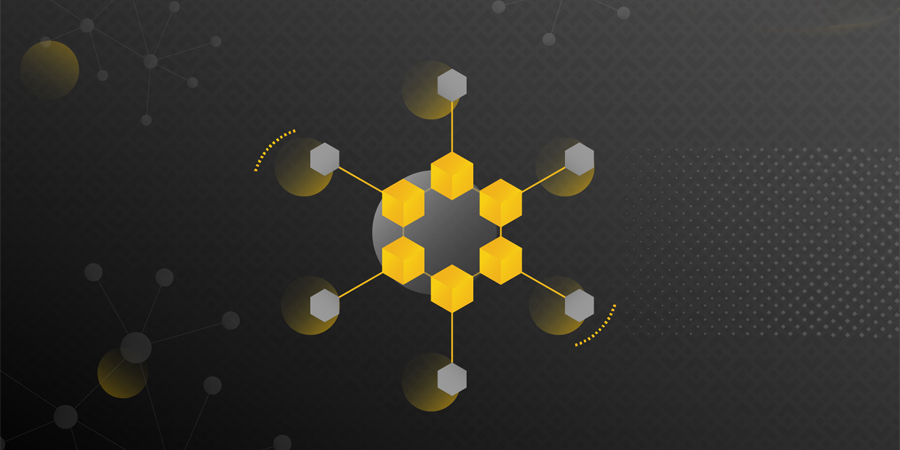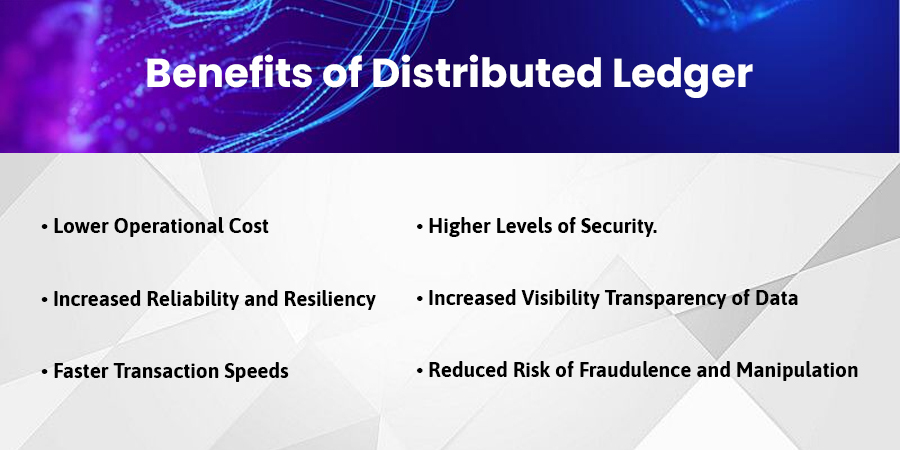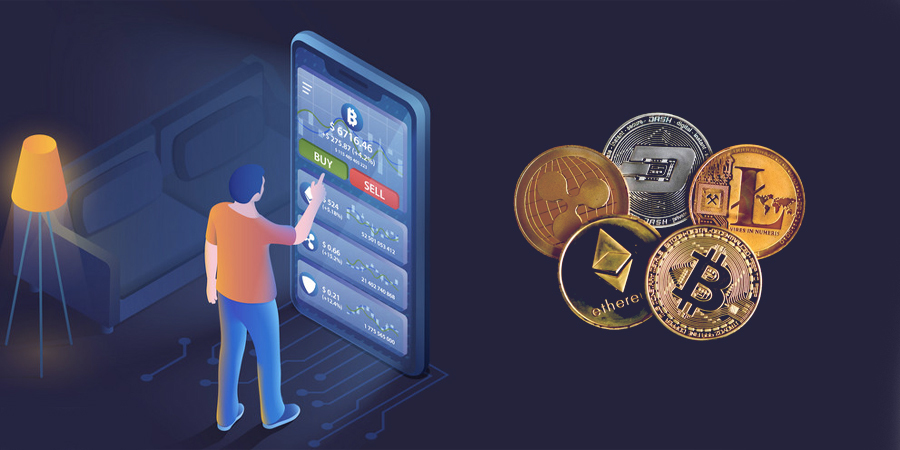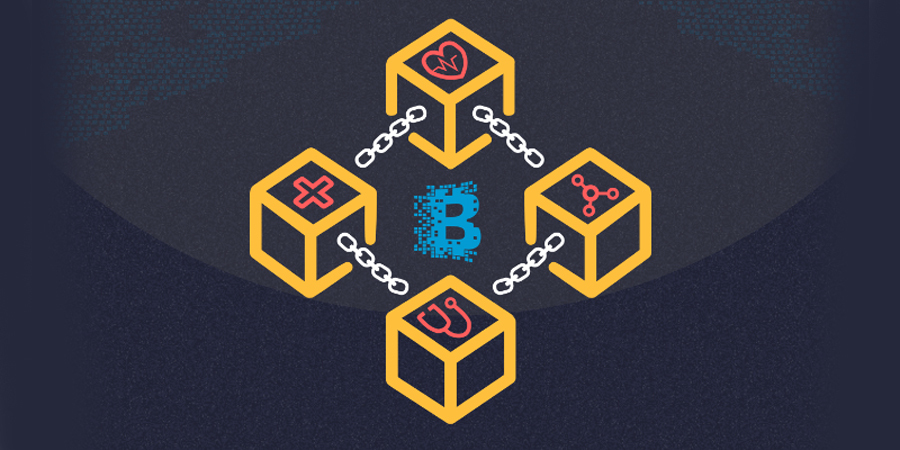Difference between Blockchain and Distributed Ledger
09/28/2021
/
Difference between Blockchain and Distributed Ledger
Ain’t blockchain technology the same as distributed ledger technology? My first reaction when I read this. So, let me expound it a bit and present similarities and differences between the two.
Blockchain is a more generalized term and is used in the context of cryptocurrencies like Bitcoin more often. The distributed ledger is yet to get acknowledged by people for the benefits and ease it offers.
Must Read: Understanding the Science of CryptoCurrency
In a nutshell, Blockchain is a digital, shared and immutable ledger that allows the recording and distribution of digital information and tracking of assets in a business network. Anything that has a value can be tracked and traded on a Blockchain network between two parties, thus eliminating the need for any middle person, while a distributed ledger is a database that exists across multiple sites, regions, or participants and eliminates the interference of third parties from the process.
 You would be surprised to know that blockchain is a sort of distributed ledger. Blockchain uses features and functionality that distributed ledgers don’t. For instance, Blockchain is a sequence/ chain of blocks but distributed ledger doesn’t require a data structure in blocks. Proof of work is an essential element of Blockchain but is not used by DLT.
You would be surprised to know that blockchain is a sort of distributed ledger. Blockchain uses features and functionality that distributed ledgers don’t. For instance, Blockchain is a sequence/ chain of blocks but distributed ledger doesn’t require a data structure in blocks. Proof of work is an essential element of Blockchain but is not used by DLT.
 As far as digital services are concerned, the need for integrity, trust and security is growing. The distributed ledger technology helps users by allowing round-the-clock transactions and minimizing transaction time to minutes. It renders more control and transparency of information and transactions to the users and increases automation & efficiency.
Implementation of distributed ledger technology in the Blockchain network simplifies financial transactions multiple times and cuts back on operational inefficiencies. The immutability and decentralized nature of Blockchain augment security scope to increase in applications in various industries.
On the surface, we may wonder about the need for a decentralized database. The statement can be countered by the fact that companies use a centralized database that lives in a fixed location. The problem that comes with a centralized database is that it has a single point of failure and a minor fault in the database will bring a pause to every associated system. Having a decentralized ledger eliminates the central authority and creates a network to perform and proceed with authentic transactions.
There are myriad of reasons that facilitate the implementation of distributed ledger and blockchain technology. Industries like logistics, finance, distribution and service sector and manufacturing sector are leveraging these technologies to carry out digital operations, including smart contracts, digital identity, claim management, shareholder records, fund transfers, and other financial operations. For those who want to get rid of time-consuming, paper-piled, and costly processes and are looking for a tamper-proof option; the potential of Blockchain is next to none.
As far as digital services are concerned, the need for integrity, trust and security is growing. The distributed ledger technology helps users by allowing round-the-clock transactions and minimizing transaction time to minutes. It renders more control and transparency of information and transactions to the users and increases automation & efficiency.
Implementation of distributed ledger technology in the Blockchain network simplifies financial transactions multiple times and cuts back on operational inefficiencies. The immutability and decentralized nature of Blockchain augment security scope to increase in applications in various industries.
On the surface, we may wonder about the need for a decentralized database. The statement can be countered by the fact that companies use a centralized database that lives in a fixed location. The problem that comes with a centralized database is that it has a single point of failure and a minor fault in the database will bring a pause to every associated system. Having a decentralized ledger eliminates the central authority and creates a network to perform and proceed with authentic transactions.
There are myriad of reasons that facilitate the implementation of distributed ledger and blockchain technology. Industries like logistics, finance, distribution and service sector and manufacturing sector are leveraging these technologies to carry out digital operations, including smart contracts, digital identity, claim management, shareholder records, fund transfers, and other financial operations. For those who want to get rid of time-consuming, paper-piled, and costly processes and are looking for a tamper-proof option; the potential of Blockchain is next to none.
 Blockchain is one of the most common use cases of Distributed Ledger Technology. All the application of Blockchain requires the participation of Distributed Ledger · Other applications are Corda, Tangle Ethereum, Hyperledger Fabric, Data management of citizens, Identity Management and Elections, etc. Government agencies are also exploring the use of technology.
Blockchain is one of the most common use cases of Distributed Ledger Technology. All the application of Blockchain requires the participation of Distributed Ledger · Other applications are Corda, Tangle Ethereum, Hyperledger Fabric, Data management of citizens, Identity Management and Elections, etc. Government agencies are also exploring the use of technology.

 Blockchain Technology is used in Supply Chain Management, Digital Ids, Property Will, Data Sharing, Food Safety, Healthcare, Real Estate, Digital Voting, Weapon tracking, Copyright and ownership protection, Data Management, Internet of Things (IoT), Cybersecurity, Shareholder Voting, Big Data & Data Storage, Diplomas and Certificates.
Blockchain Technology is used in Supply Chain Management, Digital Ids, Property Will, Data Sharing, Food Safety, Healthcare, Real Estate, Digital Voting, Weapon tracking, Copyright and ownership protection, Data Management, Internet of Things (IoT), Cybersecurity, Shareholder Voting, Big Data & Data Storage, Diplomas and Certificates.
 Whenever you update data to a Blockchain, it gets added to the peer-to-peer network. This data gets accumulated over time in the form of an immutable audit trail as every record is tamper-proof and accurate. What’s written is written and can’t be edited or manipulated. No central entity can tamper with the data storage or administration functionality.
Whenever you update data to a Blockchain, it gets added to the peer-to-peer network. This data gets accumulated over time in the form of an immutable audit trail as every record is tamper-proof and accurate. What’s written is written and can’t be edited or manipulated. No central entity can tamper with the data storage or administration functionality.
Blockchain vs Distributed Ledger
 You would be surprised to know that blockchain is a sort of distributed ledger. Blockchain uses features and functionality that distributed ledgers don’t. For instance, Blockchain is a sequence/ chain of blocks but distributed ledger doesn’t require a data structure in blocks. Proof of work is an essential element of Blockchain but is not used by DLT.
You would be surprised to know that blockchain is a sort of distributed ledger. Blockchain uses features and functionality that distributed ledgers don’t. For instance, Blockchain is a sequence/ chain of blocks but distributed ledger doesn’t require a data structure in blocks. Proof of work is an essential element of Blockchain but is not used by DLT.
Distributed ledger technology inundates with features and concepts that make it worth using, i.e., the elimination of third-person/intermediary from the exchange. DLT is an encoded and distributed ledger or database that is stretched across multiple participants or across several locations. Distributed ledgers prepare a frame for Blockchain network and Cryptography to record transaction update and verification.
Blockchain is merely a subset of distributed ledgers, and all blockchains work on DLT. Blockchain allows users to record transitions in a public community ledger that can record transactions, track assets, and transfer ownership to ensure transparency without any central authority. It implements multiple technologies to make blockchain applications work. Just like Distributed Ledger, Blockchain uses other technologies like distributed networks, digital signatures, cryptography, etc. We often link words like ‘revolution’ and ‘possibilities’ to show the progress of Blockchain, but the reality is far enough. Under the umbrella term, AI, more and more technologies are flourishing, but the authenticity and reliability is yet a demand that needs to be met.What are the Benefits of Blockchain and Distributed Ledger Technology?
 As far as digital services are concerned, the need for integrity, trust and security is growing. The distributed ledger technology helps users by allowing round-the-clock transactions and minimizing transaction time to minutes. It renders more control and transparency of information and transactions to the users and increases automation & efficiency.
Implementation of distributed ledger technology in the Blockchain network simplifies financial transactions multiple times and cuts back on operational inefficiencies. The immutability and decentralized nature of Blockchain augment security scope to increase in applications in various industries.
On the surface, we may wonder about the need for a decentralized database. The statement can be countered by the fact that companies use a centralized database that lives in a fixed location. The problem that comes with a centralized database is that it has a single point of failure and a minor fault in the database will bring a pause to every associated system. Having a decentralized ledger eliminates the central authority and creates a network to perform and proceed with authentic transactions.
There are myriad of reasons that facilitate the implementation of distributed ledger and blockchain technology. Industries like logistics, finance, distribution and service sector and manufacturing sector are leveraging these technologies to carry out digital operations, including smart contracts, digital identity, claim management, shareholder records, fund transfers, and other financial operations. For those who want to get rid of time-consuming, paper-piled, and costly processes and are looking for a tamper-proof option; the potential of Blockchain is next to none.
As far as digital services are concerned, the need for integrity, trust and security is growing. The distributed ledger technology helps users by allowing round-the-clock transactions and minimizing transaction time to minutes. It renders more control and transparency of information and transactions to the users and increases automation & efficiency.
Implementation of distributed ledger technology in the Blockchain network simplifies financial transactions multiple times and cuts back on operational inefficiencies. The immutability and decentralized nature of Blockchain augment security scope to increase in applications in various industries.
On the surface, we may wonder about the need for a decentralized database. The statement can be countered by the fact that companies use a centralized database that lives in a fixed location. The problem that comes with a centralized database is that it has a single point of failure and a minor fault in the database will bring a pause to every associated system. Having a decentralized ledger eliminates the central authority and creates a network to perform and proceed with authentic transactions.
There are myriad of reasons that facilitate the implementation of distributed ledger and blockchain technology. Industries like logistics, finance, distribution and service sector and manufacturing sector are leveraging these technologies to carry out digital operations, including smart contracts, digital identity, claim management, shareholder records, fund transfers, and other financial operations. For those who want to get rid of time-consuming, paper-piled, and costly processes and are looking for a tamper-proof option; the potential of Blockchain is next to none.
Real-World Applications of Distributed Ledger
 Blockchain is one of the most common use cases of Distributed Ledger Technology. All the application of Blockchain requires the participation of Distributed Ledger · Other applications are Corda, Tangle Ethereum, Hyperledger Fabric, Data management of citizens, Identity Management and Elections, etc. Government agencies are also exploring the use of technology.
Blockchain is one of the most common use cases of Distributed Ledger Technology. All the application of Blockchain requires the participation of Distributed Ledger · Other applications are Corda, Tangle Ethereum, Hyperledger Fabric, Data management of citizens, Identity Management and Elections, etc. Government agencies are also exploring the use of technology.
Benefits of Distributed Ledger

- Lower operational costs
- Increased reliability and resiliency
- Increased visibility transparency of data
- Higher levels of security
- Faster transaction speeds
- Reduced risk of fraudulence and manipulation
Real-World Applications of Blockchain Technology
 Blockchain Technology is used in Supply Chain Management, Digital Ids, Property Will, Data Sharing, Food Safety, Healthcare, Real Estate, Digital Voting, Weapon tracking, Copyright and ownership protection, Data Management, Internet of Things (IoT), Cybersecurity, Shareholder Voting, Big Data & Data Storage, Diplomas and Certificates.
Blockchain Technology is used in Supply Chain Management, Digital Ids, Property Will, Data Sharing, Food Safety, Healthcare, Real Estate, Digital Voting, Weapon tracking, Copyright and ownership protection, Data Management, Internet of Things (IoT), Cybersecurity, Shareholder Voting, Big Data & Data Storage, Diplomas and Certificates.
How does Blockchain Technology Work?
 Whenever you update data to a Blockchain, it gets added to the peer-to-peer network. This data gets accumulated over time in the form of an immutable audit trail as every record is tamper-proof and accurate. What’s written is written and can’t be edited or manipulated. No central entity can tamper with the data storage or administration functionality.
Whenever you update data to a Blockchain, it gets added to the peer-to-peer network. This data gets accumulated over time in the form of an immutable audit trail as every record is tamper-proof and accurate. What’s written is written and can’t be edited or manipulated. No central entity can tamper with the data storage or administration functionality.
Conclusion
We live in a data-intensive age where the accumulation of data and security are of real-time concern. Blockchain technology is designed to record digital transactions with desirable speed, security and scope. As a specific distributed ledger, Blockchain is paving the path towards security and automation for clients from various industries.Recent Posts
Monika Narriya/0 Comments
Why are ERP solutions important in the education sector?
Monika Narriya/0 Comments
Which is the best ERP solution provider company?
Monika Narriya/0 Comments
How do we select the right ERP solution for our businesses?
Sumit Kumar/0 Comments
9 Most In-Demand Programming Languages for 2024
Sumit Kumar/0 Comments
Best Time to Post on Social Media – 2024 Guide
Sumit Kumar/0 Comments
Why You Should Consider Semantic HTML for SEO
All Categories
- Bing
- Blockchain
- Blog
- Branding
- Case Study
- Content Marketing
- Conversion Rate Optimization
- Cryptocurrency
- Digital Currency
- Digital Marketing
- Email Marketing
- ERP Solutions
- Facebook Marketing
- Google Ads
- Google Updates
- Graphic Designing
- Hire Developers
- Image SEO
- Influencer Marketing
- IT
- Local SEO
- Machine Learning
- Mobile Application Development
- Pay Per Click
- Pinterest SEO
- Podcast Hosting
- React JS
- Reddit & Quora
- Search Engine Optimization
- SEO Copywriting
- Social Media Marketing
- Software
- Software Development
- Technology
- UX and UI
- Web Designs
- Web Hosting
- Website Development
- Website Redesigning
- YouTube SEO








